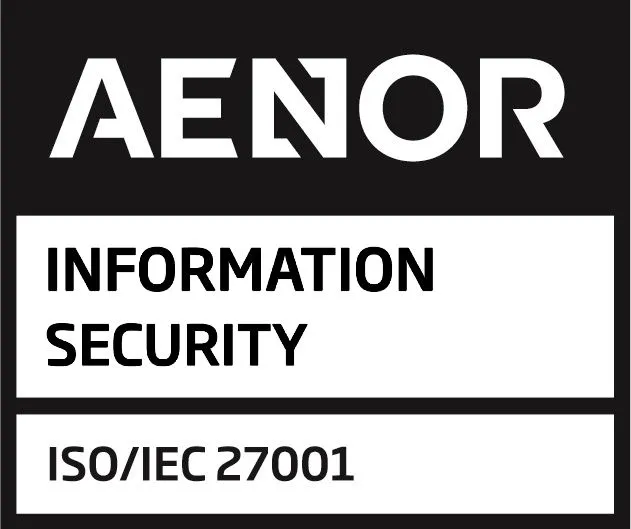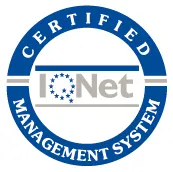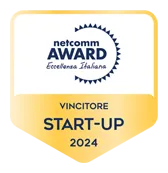
Talent attraction is a challenge. High competition in the labour market, lack of employee engagement and the difficulty of creating a positive company culture make this one of the most difficult tasks for companies today. Although there may be an increasing number of professionals available, this does not guarantee that they have the right skills or that they will be committed to staying with the company for the long term. In this article, we will explore effective strategies and tactics for attracting talent to your company.
Table of Contents
Talent attraction problems? We can help!
Main problems in the search for talent
Although common belief suggests that finding staff is simply a matter of advertising a job vacancy, the reality is far more complex than this. Depending on the size and type of organisation, there are certain challenges to consider when it comes to finding the ideal candidate(s).
- For example, in large companies with 2,000+ employees, one of the main problems hindering talent attraction is a high turnover rate. High turnover creates instability within the organisation, which then weakens the ability to attract new candidates.
- In companies with 250 to 2,000 employees, much of the budget often has to be spent on recruitment, which then leaves insufficient resources for employee engagement management, which in turn, negatively affects talent attraction.
- Meanwhile, medium-sized companies, with 50 to 250 employees, often face difficulties in establishing strong employer branding, while also lacking a clear vision and strategic approach to talent management.
- Finally, the main obstacle for small companies (10 to 50 employees) is a lack of infrastructure, i.e. not having a dedicated HR department.
No two organisations are the same, but talent attraction is a common and cross-cutting problem for all, albeit with different characteristics particular to each situation, as discussed above. According to a ManpowerGroup study published in 2023, 80% of the Spanish companies taking part in the survey claim to have major problems in finding suitable candidates. Considering that just ten years ago, this problem only affected 3% of companies, this figure is at a record high.

Talent Acquisition vs. Recruitment
Talent acquisition and recruitment are often used interchangeably, but in fact, the terms have different meanings and serve different purposes. Both seek to fill vacancies, but talent acquisition is a more strategic and long-term process.
Talent attraction focuses on finding highly qualified candidates for hard-to-fill positions and planning for future staffing needs, while recruitment tends to address more immediate, short-term vacancies that are easier to fill.
Talent acquisition involves a greater level of planning and a more in-depth understanding of the different roles and skills needed for each position. It also involves aspects such as employer branding, optimising recruitment processes and, at times, having to outsource these tasks.
How to attract talent: create a strategic talent acquisition plan
A talent acquisition strategy helps organisations identify, attract and retain top candidates who best fit the company’s culture, add value and contribute to achieving long-term goals. In addition to careful planning, this process also requires a strategy, assessments, evaluations, analysis and marketing.
As we have pointed out, successful talent acquisition requires a comprehensive strategy achieved by building a dedicated workforce. The focus should be on creating overall business value instead of simply reducing costs.
4 Strategies for attracting talent
According to the HR training platform, AIHR, there are four key words your company should remember when undertaking the search for new talent.
- Build – Suitable for large technology companies. When organisations struggle to find specialised talent, they may choose to develop the existing internal expertise. This can be done in a variety of ways, including through partnerships with schools, internships, graduate recruitment programmes or in-house skills development. A skills gap analysis is useful for identifying priority areas for training.
- Acquire – Suitable for startups and fast-growing companies. This consists of ‘buying’ people who are currently working with a competitor in a similar role or who are ready to take on a more senior position. These candidates need to be coaxed by an attractive value proposition, including an attractive salary and benefits package.
- Outsource – Suitable for companies that need to fill specific roles. In practice, this means relying on part-time workers, freelancers and contractors to supplement the skills of existing staff for a one-off project or for specific tasks. These workers will generally not stay at the company for an extended period of time.
- Promote – Suitable for established companies ready to invest in their workforce. Involves using talent analysis to determine which current employees may be suitable for future opportunities and promotions based on their newly acquired skills. Also acts as a strong retention strategy.
The three pillars of talent acquisition
As we think about talent attraction for our organisation, it is important to realise that this arduous process can be broken down into three main pillars:
- Attraction: Although a candidate may apply to many different organisations, it is worth remembering that they generally only apply to those they really would like to work for.
- Selection: Once a candidate has applied, it is the responsibility of the organisation to select those who align with both the job position and the company.
- Rotation: Once a candidate is hired, if they are not a good fit for the job or the organisation, the employee will eventually leave.
Managing the talent attraction process in 5 easy steps
Once you have adopted one of the above strategies, it is time to build your selection process. To do this, focus on creating a structure that includes the following five stages.
- Analyse the needs of your organisation
Although it may seem obvious, this is a crucial stage in the process. This is where the organisation’s mission, vision, objectives and values are transformed into competencies and core values. These elements will help to define the profile needed, necessary for guiding the selection criteria in determining how good a match the candidate, organisation and job position are.
Focus at this stage should be on tasks including creating the job description, candidate profile, competency framework, total budget and defining the people and departments that will be involved in the recruitment process. For this, creating a requirements matrix similar to this one is a useful tool:
| Role | Critical skills | Priority | Current strength in the organisation | Offered salary | Market salary |
|---|---|---|---|---|---|
| Marketing Manager | Team leader Strategy manager Budget management | Very high | Low (without marketing leadership) | €90,000 per year | €100,000 per year |
| Software Engeneer | OOD C/C+ Ruby | Low | High (replacing a team of 5 people) | €67,000 per year | €60,000 per year |
| Office Manager | Customer database management Implementation of a new administrative system | High | Low ( without office administrator for more than 3 months) | €37,000 per year | €37,000 per year |
- Establish the selection methods
Once the vacancy has been analysed and its requirements identified, the selection method and criteria can be determined. These range from general mental ability tests to formal or informal structured interviews. A good approach to choosing the right method is to calculate the ROI (return on investment) at this stage.
- Begin the search
The next stage is the search for candidates, which is the most visible part of the acquisition process. Here the candidates are divided into active and passive. Active candidates frequently visit your company’s careers page, while passive candidates do not. Therefore, you will need to adopt different strategies to target each group.
- Begin the selection process
Once you have a large enough pool of candidates, this is where the screening of CVs, pre-selection tests, reference checks and interviews takes place. The manager who will be responsible for the future employee will then screen the final candidates. Those who successfully pass this final screening will receive a job offer. This stage may involve some negotiation until both parties are satisfied.
- Onboarding and assessment
The last phase in the talent acquisition process is onboarding. The typical 30-60-90 day plan is useful for both employees and managers. It allows the manager to clearly communicate their expectations and the employee to understand what is required of them at each stage, thereby giving structure to their onboarding process.
During the final phase of onboarding, the last step will be to solicit feedback on the recruitment process in order to assess what areas can be improved and whether expectations have been met.
Talent attraction statistics
Now that you have a clearer picture of how to focus your efforts in order to expand your workforce, you may wish to take a look at some global data on the talent attraction challenge:
- Job search: More than a third of workers plan to actively search for jobs in 2024, and another 25% say they are unsure about their plans (Achievers).
- Hiring difficulties: 77% of employers had difficulty filling positions in 2023. This significant shortage is likely to continue in 2024 (LinkedIn).
- Employee retention: 89% of employers say retention is becoming increasingly difficult. (The HR Director).
- Connecting remote employees: Only 28% of remote employees feel very connected to their organisation’s purpose, an important factor contributing to staff turnover rates. (Gallup).
- Artificial intelligence: AI tools will lead to a disconnect. At least one major company will hire a candidate who ‘doesn’t exist’, whose qualifications are not real (Forrester).
Tackling talent attraction is an ongoing challenge that requires a strategy tailored to the characteristics and needs of each company. Identifying and applying effective tactics can make all the difference in today’s competitive marketplace. It will guarantee the right candidates are not only recruited, but also retained in the drive for organisational success.









